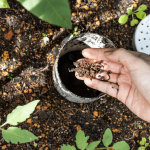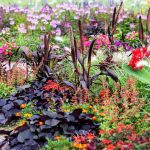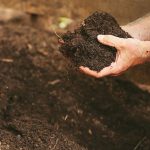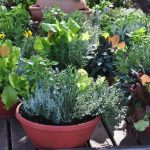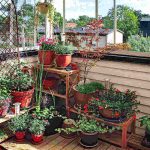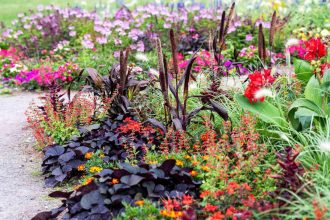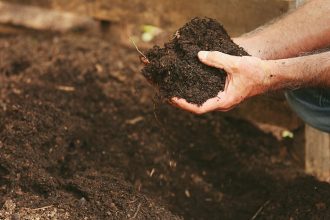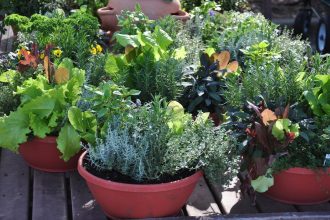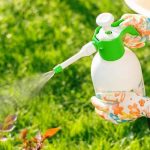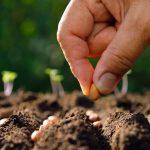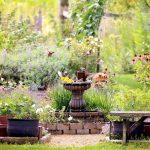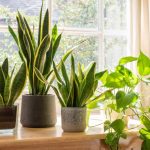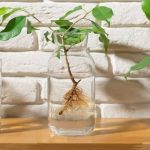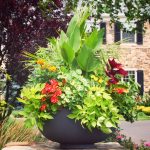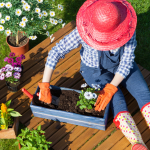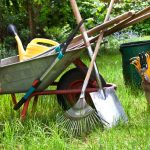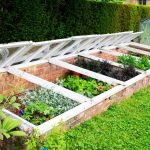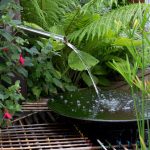Are you eager to cultivate your own vegetable garden but limited by space constraints? Look no further! Container gardening offers a versatile and practical solution for growing a delightful array of vegetables in even the smallest of spaces. With a little creativity and know-how, you can transform your balcony, patio, or windowsill into a flourishing urban oasis. Join us as we explore some essential tips and tricks for successfully growing vegetables in containers. Let’s dive in and cultivate a bountiful harvest right at home!

Selecting the Right Containers for Your Vegetables
When it comes to growing vegetables in containers, selecting the right containers is essential for the success of your plants. Here are some tips to help you choose the best containers for your vegetables:
- Size: Make sure the containers you choose are large enough to accommodate the root systems of your plants. Vegetables like tomatoes and cucumbers require deeper containers, while shallow containers are suitable for herbs and lettuce.
- Material: Consider the material of the containers. Plastic containers are lightweight and retain moisture well, while terracotta containers are porous and allow for better air circulation. Choose a material that suits the needs of your plants.
- Drainage: Proper drainage is crucial for the health of your plants. Ensure that your containers have drainage holes at the bottom to prevent waterlogging, which can lead to root rot.
Additionally, you can get creative with your container choices. Upcycled items like buckets, wooden crates, and even old bathtubs can make unique and functional planters for your vegetable garden. Just make sure to provide adequate drainage and sufficient space for your plants to thrive.
Choosing the Ideal Location for Your Container Garden
When it comes to growing vegetables in containers, choosing the right location is essential for the success of your garden. Here are some tips to help you pick the ideal spot for your container garden:
- Sunlight: Make sure your containers are placed in an area that receives plenty of sunlight. Most vegetables need at least 6-8 hours of sunlight per day to thrive.
- Protection: Consider placing your containers in a location that is sheltered from strong winds. This will help prevent your plants from getting damaged and keep them safe.
- Water access: Ensure that your containers are placed close to a water source. Vegetables in containers need regular watering, so easy access to water is crucial for their growth.
By taking these factors into consideration, you can ensure that your container garden has the best possible chance of success. With the right location, your vegetables will thrive and provide you with a bountiful harvest.
Essential Tips for Watering and Fertilizing Vegetables in Containers
When it comes to growing vegetables in containers, proper watering and fertilizing are key to ensuring a successful harvest. Here are some essential tips to help you keep your container garden thriving:
- Choose the right containers: Make sure your containers have drainage holes to prevent water from pooling at the bottom, which can lead to root rot.
- Water consistently: Vegetables in containers tend to dry out faster than those in the ground, so it’s important to check the soil regularly and water accordingly.
- Fertilize regularly: Use a balanced, water-soluble fertilizer to provide your vegetables with the nutrients they need to grow and produce a bountiful harvest.
- Consider using mulch: Mulch can help retain moisture in the soil and reduce the need for frequent watering, especially during hot summer months.
| Vegetable | Watering Frequency |
|---|---|
| Tomatoes | Every 1-2 days |
| Peppers | Every 2-3 days |
| Lettuce | Every day |
By following these tips and staying consistent with your watering and fertilizing routine, you’ll be well on your way to growing a successful container vegetable garden.
Tips for Growing Vegetables in Containers
When it comes to of your container vegetables, there are a few key things to keep in mind. First and foremost, it’s important to place your containers in a spot that receives at least 6-8 hours of direct sunlight each day. This will ensure that your plants have the energy they need to grow and produce healthy, vibrant vegetables.
Additionally, you’ll want to pay attention to the air circulation around your containers. Good air circulation is crucial for preventing diseases and promoting healthy growth. To maximize air flow, try spacing your containers out so that there is room for air to move freely between them. You can also consider using a small fan to help circulate the air around your plants.
Another tip for maximizing sunlight and air circulation is to regularly rotate your containers. This will help ensure that all sides of your plants receive equal amounts of sunlight and fresh air, leading to more even growth and better overall health. By following these tips, you can create an ideal environment for your container vegetables to thrive and produce an abundant harvest.
As you embark on your container gardening journey, remember that patience and persistence are key. With a little bit of effort and the right tips, you can successfully grow a bountiful vegetable garden right on your doorstep. So roll up your sleeves, get your hands dirty, and watch your vegetables thrive in their cozy containers. Happy gardening!


